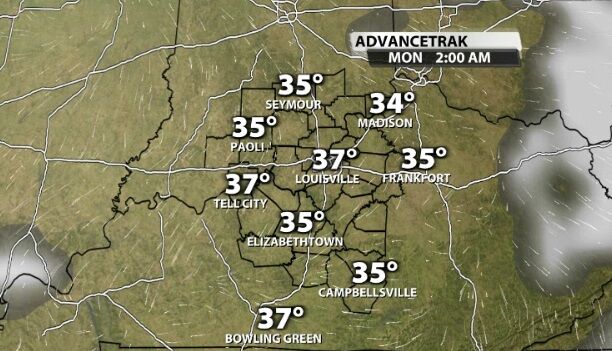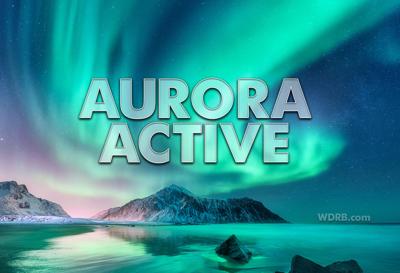There is a higher-than-zero chance the aurora borealis could be visible over our area Sunday night, but please do not get your hopes up. We are positioned so far south of the north pole that a lot of weird things have to happen for you to have any chance to see the "northern lights," and while a few of those things are happening, it is still really unlikely we will be able to see much of anything here.
One quick note: be careful what you believe on the internet. Yes, I know you found this post on the internet, but there are a lot of people sharing a lot of wrong information about this chance to see the aurora. All the information in this post comes from forecasters and scientists whose credentials I was easily able to verify. Just because someone says they're an astrophysicist on the internet, doesn't actually mean they are.
Let's start with what's happening: a geomagnetic storm. NOAA's Space Weather Prediction Center warned of the possibility of a geomagnetic storm today, and now that it's actually happening, it's stronger than first expected. Sunday afternoon a geomagnetic K-index of 8-9 was reached which translates to a G4 Severe geomagnetic storm. That's on a scale from 1 to 5 where G1 is the weakest and G5 is the strongest, so this is a stronger storm. Straight from the SWPC who issue these alerts, here's what that means:

Space Weather Prediction Center
In that alert stating the K-index 8-9 threshold had been reached today, SWPC warned "Aurora my be seen as low as Alabama and northern California." They went on to say in the Twitter post below, "Severe (G4) geomagnetic storms were observed (...) in response to the arrival of a CME that left the Sun on 21 Apr." A CME is a coronal mass ejection and this one was "a full-halo CME," according to SWPC. CMEs are a "large expulsions of plasma and magnetic field from the Sun’s corona. They can eject billions of tons of coronal material and carry an embedded magnetic field." So this being a full-halo CME means material didn't just spurt out one side.
— NOAA Space Weather (@NWSSWPC) April 23, 2023
Will we be able to see it?
Weather-wise we should be in good shape. There will be very few clouds in the sky to obstruct our view IF the aurora drifts this far south.

The brightest colors in the image below are where the aurora is most likely to be visible, and the thin red line is basically the farthest south it would even be possible to see it. This was issued after the strongest observed K-index levels were observed and still does not include us. However, if you look closely, this forecast is for a geomagnetic storm half as strong as the one that was observed this afternoon. The chance of seeing the northern lights here is low, and at the same time, this is the best chance we've had in a while of the aurora extending this far south which is why people on the internet are getting so worked up about it.

Space Weather Prediction Center
How can I see it?
If you want to try your luck, first, get away from all light. If this happens, the colors here will not be bright and vibrant like you've seen in pictures. You need to get away from all lights, including light pollution around cities and your house.
Second, look toward the north; there's where the northern lights will be spreading from.
Third, if you're trying to take a photo, try longer exposures. In fact, your best chance to see this will likely be through a camera lens; the aurora will not look as vivid to your eyes as you think it will.
To answer the title question of this post "will I be able to see the northern lights?" Probably not. We live too far south for that to be a reality here. But this is the best chance we've had in a while to see the lights, so I guess I'm saying there's a chance...though it's a small chance.
If you do think you see it tonight, let us know on social media! You can find me using the links at the top of this post, and you can find all of our Meteorologists on Facebook, Twitter, and Instagram.




